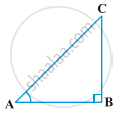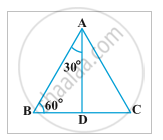Topics
Number Systems
Real Numbers
Algebra
Polynomials
Pair of Linear Equations in Two Variables
- Introduction to linear equations in two variables
- Graphical Method
- Substitution Method
- Elimination Method
- Cross - Multiplication Method
- Equations Reducible to a Pair of Linear Equations in Two Variables
- Consistency of Pair of Linear Equations
- Inconsistency of Pair of Linear Equations
- Algebraic Conditions for Number of Solutions
- Simple Situational Problems
- Pair of Linear Equations in Two Variables
- Relation Between Co-efficient
Quadratic Equations
- Quadratic Equations
- Solutions of Quadratic Equations by Factorization
- Solutions of Quadratic Equations by Completing the Square
- Nature of Roots of a Quadratic Equation
- Relationship Between Discriminant and Nature of Roots
- Situational Problems Based on Quadratic Equations Related to Day to Day Activities to Be Incorporated
- Application of Quadratic Equation
Arithmetic Progressions
Coordinate Geometry
Lines (In Two-dimensions)
Constructions
- Division of a Line Segment
- Construction of Tangents to a Circle
- Constructions Examples and Solutions
Geometry
Triangles
- Similar Figures
- Similarity of Triangles
- Basic Proportionality Theorem (Thales Theorem)
- Criteria for Similarity of Triangles
- Areas of Similar Triangles
- Right-angled Triangles and Pythagoras Property
- Similarity of Triangles
- Application of Pythagoras Theorem in Acute Angle and Obtuse Angle
- Triangles Examples and Solutions
- Concept of Angle Bisector
- Similarity of Triangles
- Ratio of Sides of Triangle
Circles
Trigonometry
Introduction to Trigonometry
- Trigonometry
- Trigonometry
- Trigonometric Ratios
- Trigonometric Ratios and Its Reciprocal
- Trigonometric Ratios of Some Special Angles
- Trigonometric Ratios of Complementary Angles
- Trigonometric Identities
- Proof of Existence
- Relationships Between the Ratios
Trigonometric Identities
Some Applications of Trigonometry
Mensuration
Areas Related to Circles
- Perimeter and Area of a Circle - A Review
- Areas of Sector and Segment of a Circle
- Areas of Combinations of Plane Figures
- Circumference of a Circle
- Area of Circle
Surface Areas and Volumes
- Surface Area of a Combination of Solids
- Volume of a Combination of Solids
- Conversion of Solid from One Shape to Another
- Frustum of a Cone
- Concept of Surface Area, Volume, and Capacity
- Surface Area and Volume of Different Combination of Solid Figures
- Surface Area and Volume of Three Dimensional Figures
Statistics and Probability
Statistics
Probability
Internal Assessment
Notes
1) Trignometric Ratios of 45°

In ∆ ABC, right-angled at B, if one angle is 45°, then the other angle is also 45°, i.e., ∠ A = ∠ C = 45°
If two angles are equal then the sides opposite to them are also equal
therefore, BC = AB
Now, Suppose BC = AB = a.
Then by Pythagoras Theorem, `"AC"^2 = "AB"^2 + "BC"^2` = `a^2 + a^2 = 2a^2`,
and, therefore, AC = `asqrt2`.
Using the definitions of the trigonometric ratios, we have :
sin45°=`"perpendicular"/ "hypotenuse"`= `"BC"/"AC"`=`a/(asqrt2)` = `1/sqrt2`
cos45°= `"base"/ "hypotenuse"`= `"AB"/"AC"`= `a/ (asqrt2)` = `1/sqrt2`
tan45°= `"perpendicular"/"base"`= `"BC"/"AB"`= `a/a`= 1
Also, cosec 45° = `1/(sin45°)`= `sqrt2`,
sec 45° = `1/(cos45°)= sqrt2,`
cot 45° = `1/(tan45°) = 1.`
2)Trigonometric Ratios of 30° and 60°

Let us now calculate the trigonometric ratios of 30° and 60°. Consider an equilateral triangle ABC. Since each angle in an equilateral triangle is 60°, therefore, ∠ A = ∠ B = ∠ C = 60°.
Draw the perpendicular AD from A to the side BC
AD is the common side in ∆ ABD and ∆ ACD
∆ ABD ≅ ∆ ACD (Angle-Side-Angle rule)
Therefore, BD = DC
and ∠ BAD = ∠ CAD (corresponding parts of congruent triangles)
∆ ABD is a right triangle, right-angled at D with ∠ BAD = 30° and ∠ ABD = 60°
let us suppose that AB = 2a.
Then, `BD =1/2"BC"= a`
`"AB"^2= "AD"^2+"BD"^2`
`2a^2= "AD"^2+ a^2`
`4a^2= "AD"^2+a^2`
`"AD"^2= 3a^2`
`"AD"= asqrt3`
Now, we have,
`sin 30°= "BD"/"AB"= a/(2a)= 1/2`,
`cos 30°= "AD"/"AB"= (asqrt3)/(2a)= sqrt3/2,`
`tan30°= "BD"/"AD"= a/(asqrt3)= 1/sqrt3,`
Also, `cosec 30°= 1/(sin30°)=2,`
`sec30°= 1/(cos30°)= 2/sqrt3` and
`cot30°= 1/(tan30°)`= `sqrt3`
Similarly, sin60°= `"AD"/"AB"= (asqrt3)/(2a)= sqrt3/2,`
cos60°= `1/2,`
tan60°= `sqrt3,`
cosec60°= `2/sqrt3,`
sec60°=2
and cot60°= `1/sqrt3`.
3) Trigonometric Ratios of 0°-
Let us see what happens to the trigonometric ratios of angle A, if it is made smaller and smaller in the right triangle ABC, till it becomes zero. As ∠ A gets smaller and smaller, the length of the side BC decreases. The point C gets closer to point B, and finally when ∠ A becomes very close to 0°, AC becomes almost the same as AB.
BC=0 and AC=AB
sin0°= `"BC"/"AC"= 0/"AC"= 0,`
cos0°= `"AB"/"AC"= 1`,
tan0°= `"BC"/"AB"= 0/"AB"= 0`,
cot0°= `1/(tan0°)`= not defined,
sec0°= `1/(cos0°)`= 1
and cosec0°= `1/(sin0°)`= not defined.
4)Trigonometric Ratios of 90°-

Now, let us see what happens to the trigonometric ratios of ∠ A, when it is made larger and larger in ∆ ABC till it becomes 90°. As ∠ A gets larger and larger, ∠ C gets smaller and smaller. Therefore, as in the case above, the length of the side AB goes on decreasing. The point A gets closer to point B. Finally when ∠ A is very close to 90°, ∠ C becomes very close to 0° and the side AC almost coincides with side BC.
AB=0 and AC=BC
sin90°= `"BC"/"AC"= 1`,
cos90°= `"AB"/"AC"= 0/"AC"= 0,`
tan90°= `"BC"/"AB"= "BC"/0`= not defined,
cot90°= `"AB"/"BC"= 0/"BC"= 0`,
sec90°= `"AC"/"AB"= "AC"/0`= not defined
and cosec90°= `"AC"/"BC"= 1.`
Let's sum up this information in a table,

